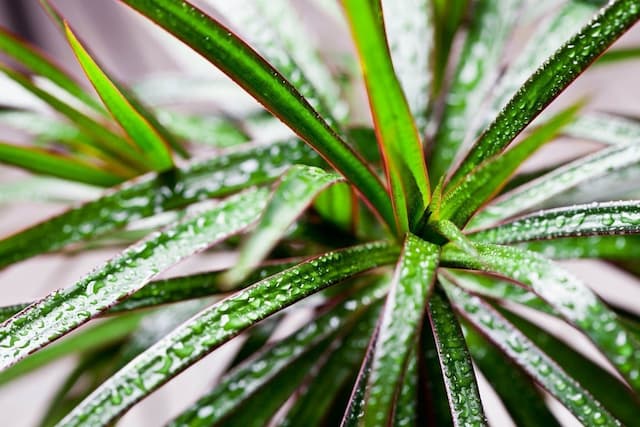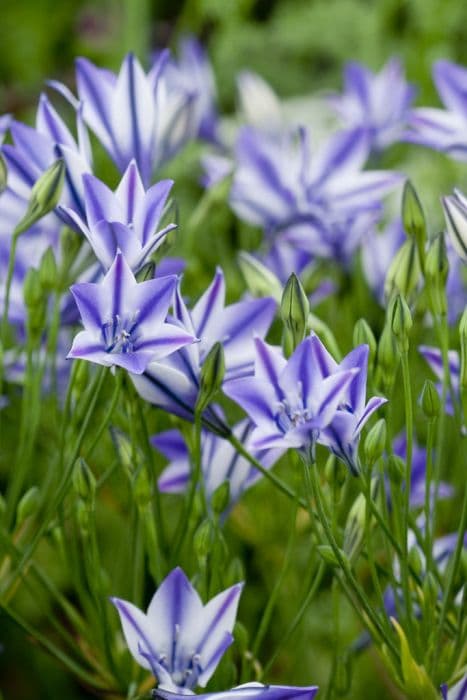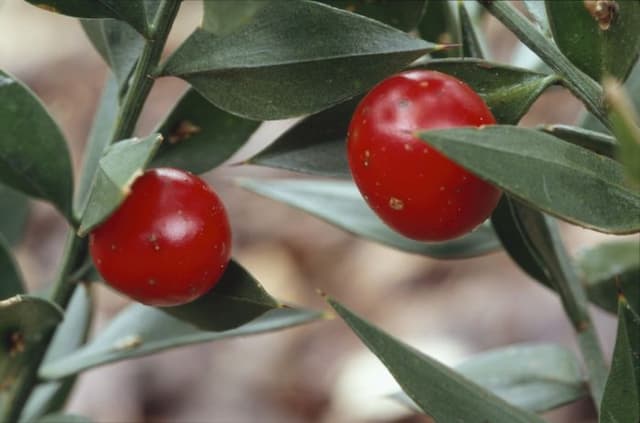Spanish Bluebell Hyacinthoides hispanica

ABOUT
Known as Spanish bluebells, this plant is notable for its attractive bell-shaped flowers, which add a burst of color to gardens in the spring. The blossoms typically come in shades of blue but can also be found in pink or white. Each stem holds a graceful arrangement of these pendulous, tubular flowers that gently nod in the breeze. The leaves of Spanish bluebells are lance-shaped, with a smooth and glossy texture, providing a lush green backdrop for the vibrant blooms. Its foliage is upright and forms clumps that spread outwards, adding lushness to the plant's overall appearance. The flowers cluster along the top part of the stem, creating a delicate and picturesque display. The charm of the Spanish bluebells lies in their enchanting flowers and fresh green foliage that collectively create a captivating visual in a springtime garden setting.
About this plant
 Names
NamesFamily
Asparagaceae
Synonyms
Spanish Bluebell, Wood Hyacinth, Spanish Bells, Hispanica Bluebell, Wood Bellflower
Common names
Endymion hispanicus, Scilla hispanica, Agraphis hispanica, Hyacinthus hispanicus, Somera hispanica.
 Toxicity
ToxicityTo humans
Spanish bluebells is generally considered non-toxic to humans. However, like many plants, it is not advisable to ingest any part of it, as it may cause an upset stomach or an allergic reaction in sensitive individuals. There are no serious symptoms of poisoning associated with Spanish bluebells for humans under normal circumstances.
To pets
Spanish bluebells can be toxic to pets if ingested. If a pet consumes any part of the plant, symptoms of poisoning may include vomiting, diarrhea, and lethargy. In severe cases, ingestion could lead to more serious symptoms such as tremors or cardiac abnormalities. It is important to keep pets away from Spanish bluebells to prevent accidental ingestion.
 Characteristics
CharacteristicsLife cycle
Perennials
Foliage type
Deciduous
Color of leaves
Green
Flower color
Blue
Height
1 foot (30 cm)
Spread
1 foot (30 cm)
Plant type
Bulb
Hardiness zones
3
Native area
Spain Portugal
Benefits
 General Benefits
General Benefits- Aesthetic Appeal: Hyacinthoides hispanica, commonly known as Spanish bluebells, adds a beautiful touch of colors ranging from blue to pink and white to gardens in the spring.
- Ease of Care: Spanish bluebells are low maintenance and can thrive with minimal care once established, making them ideal for novice gardeners.
- Naturalizing: They readily naturalize, meaning they spread and come back each year with little to no human intervention, perfect for creating a self-sustaining display of color.
- Shade Tolerance: Spanish bluebells can grow in partial shade, which is beneficial for gardening under trees or in other areas with limited sunlight.
- Attracts Pollinators: The flowers provide nectar for bees and butterflies, supporting local ecosystems and contributing to the pollination of other plants.
- Deer and Rabbit Resistance: These plants are generally resistant to grazing by deer and rabbits, protecting them from garden pests without the need for chemical deterrents.
 Medical Properties
Medical PropertiesThis plant is not used for medical purposes.
 Air-purifying Qualities
Air-purifying QualitiesThis plant is not specifically known for air purifying qualities.
 Other Uses
Other Uses- Spanish bluebell bulbs can be used for their starch content in industrial applications, such as in the production of glues and adhesives.
- In certain cultures, the crushed bulbs of Spanish bluebell have been used as a source of sap for bookbinding and repairing paper artifacts.
- The plant's sturdy leaves have been historically used as impromptu bookmarks by gardeners and flower enthusiasts.
- Dried Spanish bluebell flowers may be included in potpourri mixes for their shape and color, contributing a unique aesthetic to the blend.
- The pigment extracted from Spanish bluebell flowers can be used as a natural dye for fabrics, giving a pale blue or lilac tint.
- School science projects may utilize the unique pigmentation of Spanish bluebell flowers to demonstrate natural color changes in pH experiments.
- Spanish bluebell's flowering timing has been used as a phenological indicator in some areas, signaling the onset of certain springtime agricultural activities.
- Floristry schools sometimes use Spanish bluebell as a model to teach students about bulbous plant growth and flowering patterns.
- Because of its prolific growth, Spanish bluebell is used as a living mulch in some gardens, helping to suppress weeds and retain soil moisture.
- Spanish bluebell seeds can be a food source for certain bird species, contributing to local biodiversity.
Interesting Facts
 Feng Shui
Feng ShuiThe Spanish bluebell is not used in Feng Shui practice.
 Zodiac Sign Compitability
Zodiac Sign CompitabilityThe Spanish bluebell is not used in astrology practice.
 Plant Symbolism
Plant Symbolism- Constancy: The Spanish bluebell, or Hyacinthoides hispanica, often symbolizes constant love and unwavering faith due to its perennial nature and its ability to bloom consistently each year.
- Humility: With their bell-shaped blossoms bowing down, Spanish bluebells represent humility. They are not as showy as some other spring flowers, hence symbolizing modesty and a down-to-earth persona.
- Gratitude: The Spanish bluebell can be seen as a token of thanks, allowing the giver to express gratitude with its delicate and unassuming beauty.
- Everlasting Love: The enduring and returning growth of these bulbs can signify enduring love, making them a fitting gift between long-term partners.
 Water
WaterSpanish bluebells should be watered generously once a week, providing about 1 inch of water which equals roughly 0.623 gallons per square yard, to ensure the soil is moist but not waterlogged. During their active growth in spring, it's crucial to maintain consistent moisture. In the dormant period after flowering, reduce watering frequency, allowing the soil to dry out slightly. Over-watering can lead to bulb rot, so it's important to ensure good drainage and avoid soggy conditions.
 Light
LightSpanish bluebells thrive in partial shade to full shade conditions where they can receive dappled sunlight or bright indirect light. An ideal spot is under deciduous trees where they receive early spring sun before the trees fully leaf out and are then protected from intense midday sun during the hotter months. They do not perform well in harsh, direct sunlight, which can scorch their foliage.
 Temperature
TemperatureSpanish bluebells are hardy and can tolerate a range of temperatures, from a minimum of around 20°F to a maximum of 75°F. The ideal temperature range for promoting growth and flowering is between 50°F and 70°F. Frost can damage new growth, so providing some protection if temperatures unexpectedly dip below this range is advisable.
 Pruning
PruningPruning Spanish bluebells is not frequently necessary, but deadheading spent flowers can encourage bulb strength for the next season. It's best to leave the foliage intact until it turns yellow and dies back naturally, which allows the plant to store energy for the next year. There is no strict schedule for pruning, but removing old flower stems after blooming can tidy up the plants.
 Cleaning
CleaningAs needed
 Soil
SoilSpanish Bluebells prefer well-drained soil rich in organic matter with a pH of 6 to 7. A mix containing equal parts of garden soil, peat moss, and sharp sand (or perlite) creates an ideal growing medium for these bulbs.
 Repotting
RepottingSpanish Bluebells are typically planted outdoors and not commonly repotted. Once planted, they can naturalize and spread without frequent disturbance, but if needed, bulbs can be lifted and divided after foliage dies back in late spring or summer.
 Humidity & Misting
Humidity & MistingSpanish Bluebells are not particularly humidity-sensitive; they thrive in average outdoor humidity conditions. The plant does well with the humidity levels typically found in temperate climates.
 Suitable locations
Suitable locationsIndoor
Place in bright, indirect light and keep soil moist.
Outdoor
Plant in partial shade, in moisture-retentive soil.
Hardiness zone
3-9 USDA
 Life cycle
Life cycleSpanish bluebell (Hyacinthoides hispanica) begins its life cycle as a bulb, which remains dormant underground during the summer. In autumn, this bulb sprouts roots, and by late winter or early spring, it sends up shoots that develop into strap-shaped leaves and stem. The growth culminates in the blooming of bell-shaped blue, purple, pink, or white flowers on tall spikes between April and June, depending on the climate. After pollination, often by bees or other insects, the flowers produce seed capsules, which when ripe, split open to disperse seeds that can grow into new bulbs. Once flowering is finished, the above-ground foliage dies back, and the plant enters a period of dormancy throughout the late spring and summer months. The cycle begins again with the next growing season when temperatures and soil conditions become favorable.
 Propogation
PropogationPropogation time
Spring
The Spanish bluebell, or Hyacinthoides hispanica, is most commonly propagated by dividing its bulbs. The ideal time for this is after the foliage has died back, usually in late summer or early fall. To propagate, carefully dig up the clumps of bulbs and gently separate them by hand, ensuring that each division has at least one growth point. Replant the bulbs about 3 to 4 inches (approximately 7.5 to 10 cm) deep and 4 to 6 inches (around 10 to 15 cm) apart in well-draining soil. Water the bulbs well after planting to help establish them. This is a simple and effective approach to expand your collection or share these charming flowers with friends and fellow gardeners.









